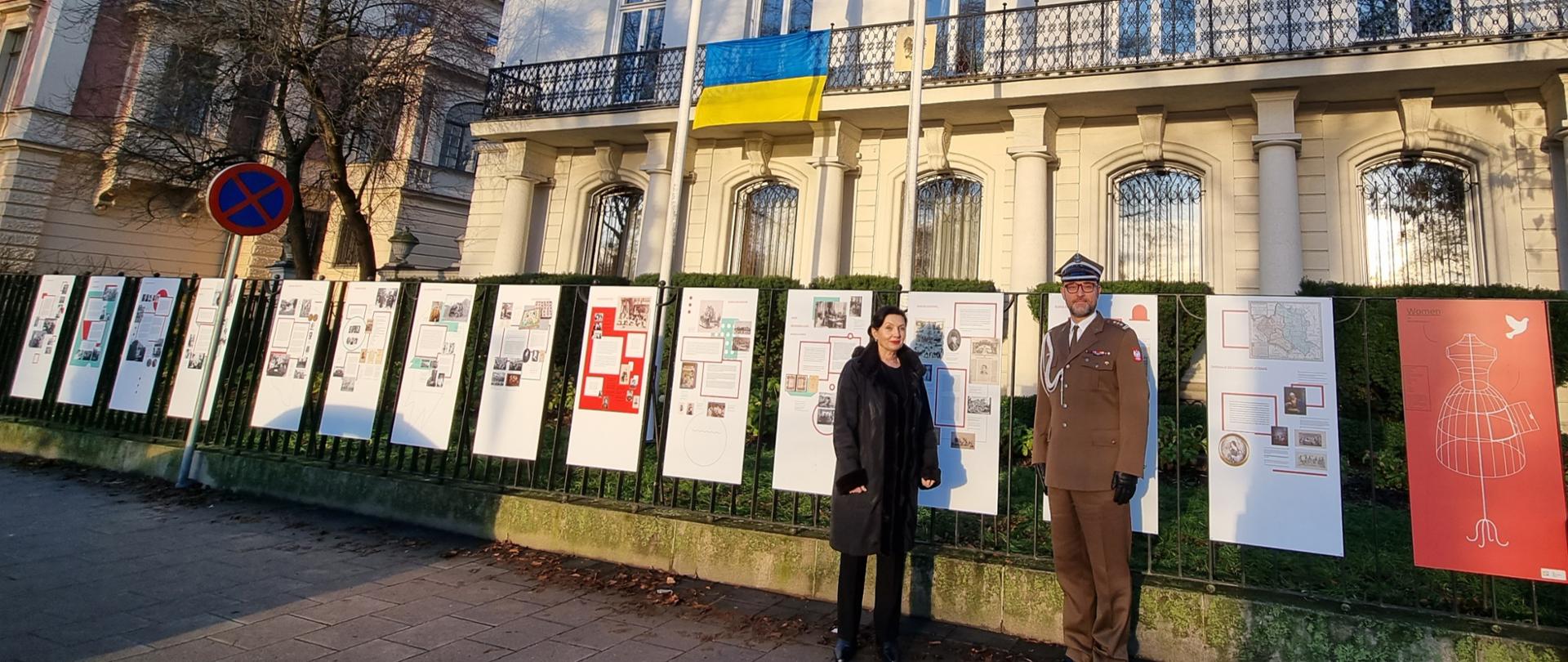Open-air exhibition "Women of Independence"
06.12.2022

Your Excellency,
We cordially invite you to see the open-air exhibition "Women of Independence", which was officially opened by Ambassador of Poland, Joanna Hofman together with the Polish Defence Attache Adam Jaborski. The social roles of women in the 18th and 19th centuries were closely focused around the home and the family. The loss of independence of Poland at the end of the eighteenth century and the subsequent period of wars and national insurrections violated this traditional role division. Some women decided to take an active part in the struggle for independence of homeland.
By visiting the exhibition You can find out more among others about Emilia Plater, the most famous Polish woman who was an active combatant during the November Uprising in 1830, concealing her gender, she joined the insurrectionist forces and was promoted to officer’s rank and led a company of infantry. You can read more about the writer Eliza Orzeszkowa described the tragic fate of the protagonist, who was unable to cope with life after her husband's death. The emotionally evocative narrative caused this problem to be widely debated. Izabella Ryxowa, whose husband – as a participant in the uprising – had to emigrate from the country, started the first industrial production of poultry in Poland. Additionally, find out more details about Maria Skłodowska – Curie, that conducted research on radioactivity, which brought her the Nobel Prize or Anna Tomaszewicz-Dobrska, the first Polish woman ever to obtain a medical diploma and Cecylia Śniegocka, the organizer of illegal schooling for the underprivileged children of Warsaw. In Poland, as in other European countries, the issue of electoral rights being granted to women was a source of great controversy. In the parliamentary elections in Poland in 1919, the mandate was received by eight women who presented various political options, from the right wing, through peasant activists, to the socialist movement. You can even read more about Halina Konopacka who began to practice sport as a student and in 1928, during the Olympic Games in Amsterdam, she won the first gold medal for Poland. The outbreak of World War II forced Polish women once again to fight shoulder to shoulder with men and to defend the independence of their country. While in the regular army they served as auxiliaries, and in the conspiratorial network, their roles included those of liaison officers, paramedics and intelligence agents, whereby their work was not to be overestimated. The Polish writer Zofia Kossak-Szczucka initiated the secret Jewish Aid Council "Żegota", which aimed to rescue the Jewish population from the demise of the Holocaust. Thanks to Irena Sendlerowa’s efforts and support from the Polish staff, the magistrate managed to illegally move over 2 thousand Jewish children out of the ghetto.
In the last two centuries the societal role of women in Poland has reached far beyond the traditional concepts concerning what members of the female sex ought to be tasked with. This resulted from historical necessity, as well as the women’s well-informed ambition to have their potential fulfilled.
The exhibition is open to the public and can be viewed every day at 35 Karlavägen Street in Stockholm, on the fence of the Embassy of the Republic of Poland, throughout its exhibition.
Embassy of the Republic of Poland